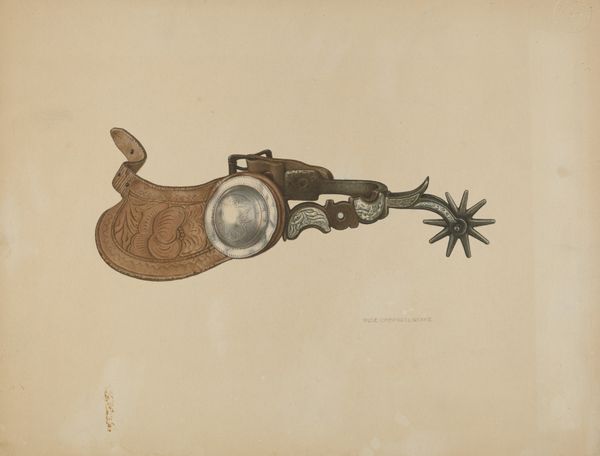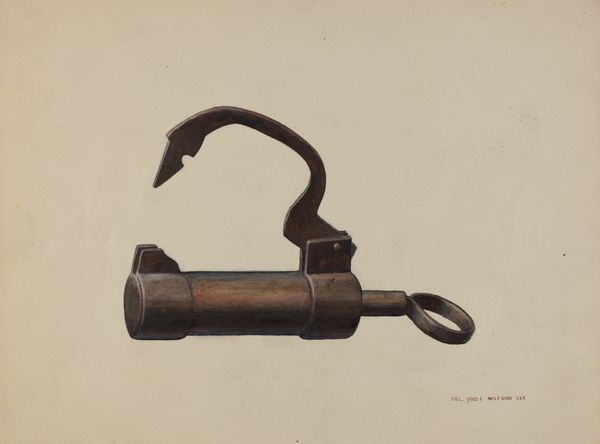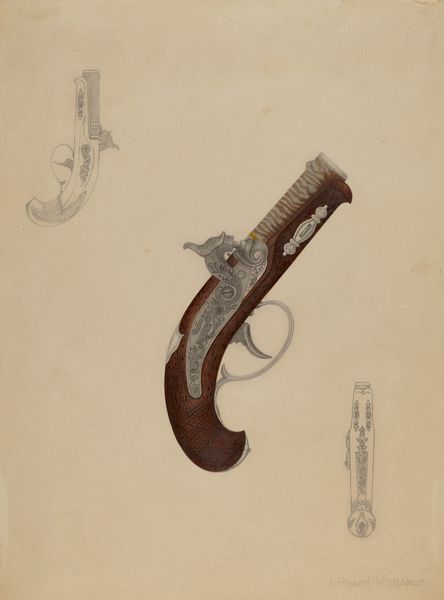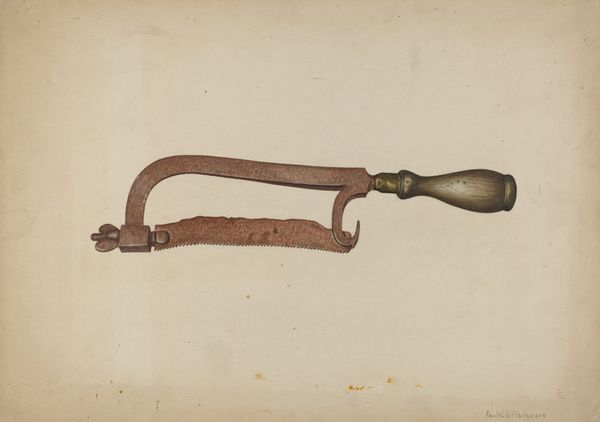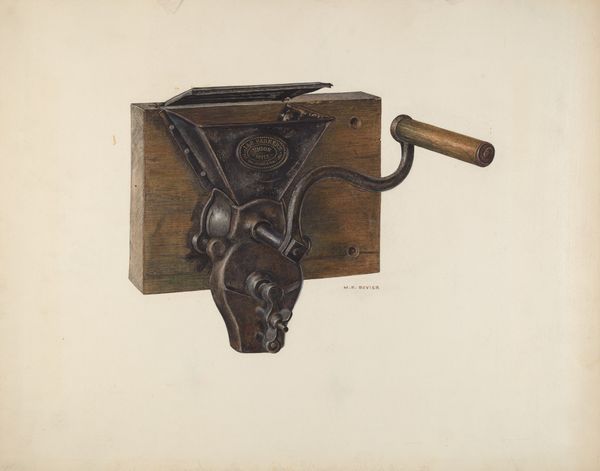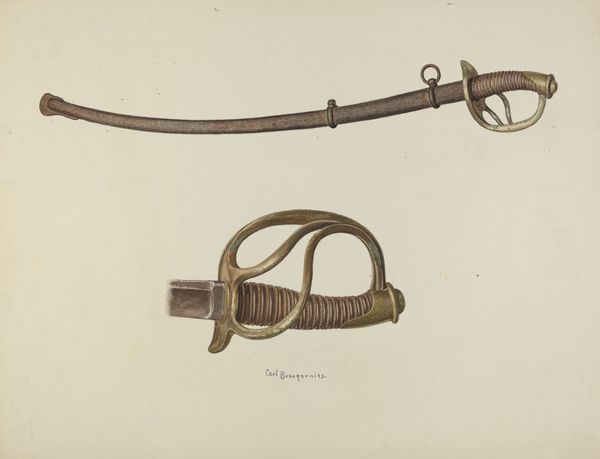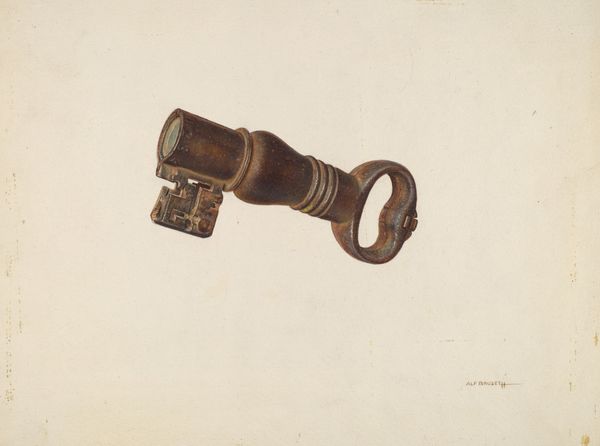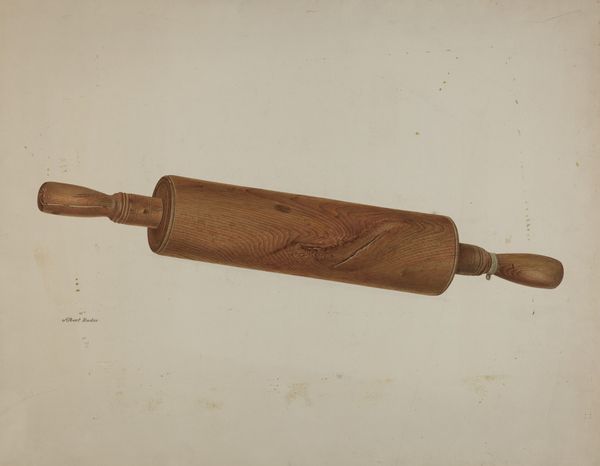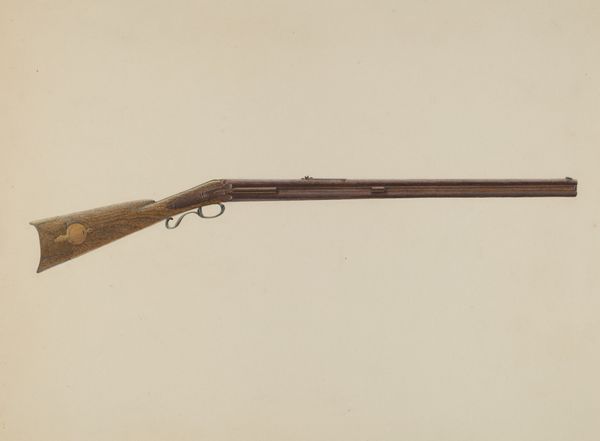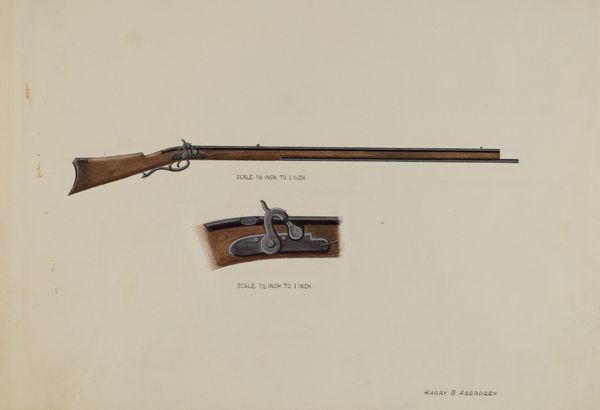
drawing, watercolor
#
drawing
#
charcoal drawing
#
watercolor
#
pencil drawing
Dimensions: overall: 24.6 x 35.4 cm (9 11/16 x 13 15/16 in.)
Copyright: National Gallery of Art: CC0 1.0
Curator: Rose Campbell-Gerke created this piece, entitled "Revolver," sometime between 1935 and 1942, employing watercolor, charcoal, and pencil. The artwork presents a rather straightforward depiction, wouldn’t you say? Editor: Stark! Almost a clinical detachment to it. The object dominates the space, yet there’s also this old-world feel coming through—the wood grain and faded gold. It speaks to ideas of power and perhaps obsolescence at the same time. Curator: Indeed, the revolver carries immense symbolic weight tied to concepts of law, violence, and national identity. The 1930s and 40s saw a shift in representations of weaponry; images weren’t only glorifications of war or military prowess. Think of the anxieties simmering around social order during the Depression era. This artwork's flat representation speaks volumes to a nation grappling with fear, I would say. Editor: It also reminds us how technology shifts the symbol system; it replaces an older version but still shares the symbolic link to conflict or defence. Look at the specific design of the revolver, harkening back to an older, perhaps less efficient, firearm, it suggests a turning away, or maybe even a clinging to a bygone sense of security in the face of modern dangers. It represents a different period where you saw your opponents on eye level, which could bring on nostalgic feelings during these uncertain times. Curator: And, by choosing to render it in watercolor and pencil, the artist is already setting up a conceptual interplay with something historical in process. Not creating this in an oil or another medium signals to a type of reevaluation to the revolver. Editor: Yes, it introduces such vulnerability! The muted tones and what almost feels like naive draftsmanship lend a melancholy air. It is almost as if it speaks to our complicated relationships with items of power. And you realize there's more to it than your initial understanding of what you see. Curator: Agreed. It underscores the artist's awareness of these shifts, contributing a very poignant dimension. Editor: Absolutely, this unassuming study prompts reflection about our relationship with symbols and the historical context that informs our perceptions even to this day.
Comments
No comments
Be the first to comment and join the conversation on the ultimate creative platform.
